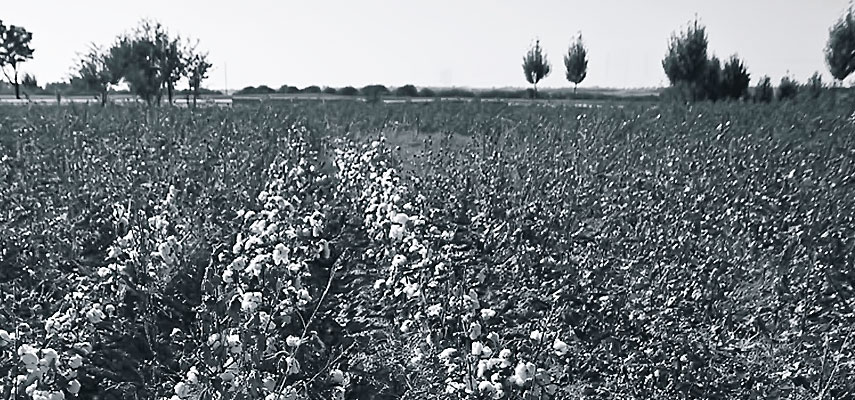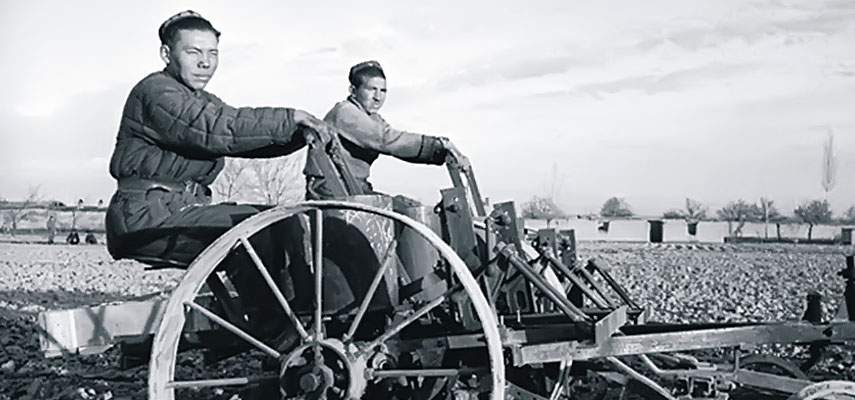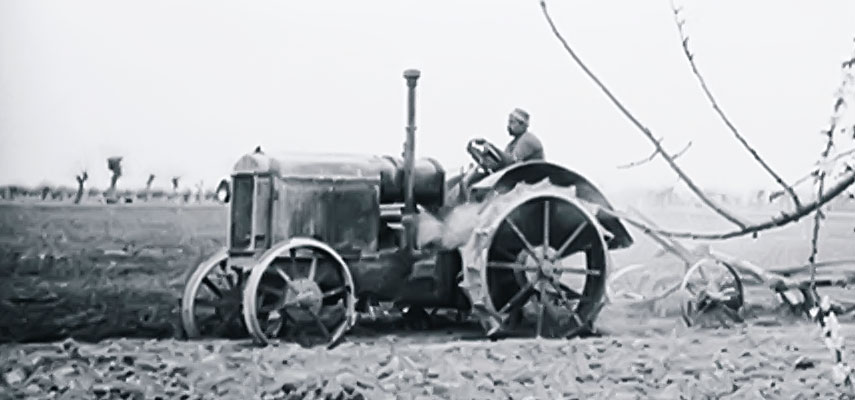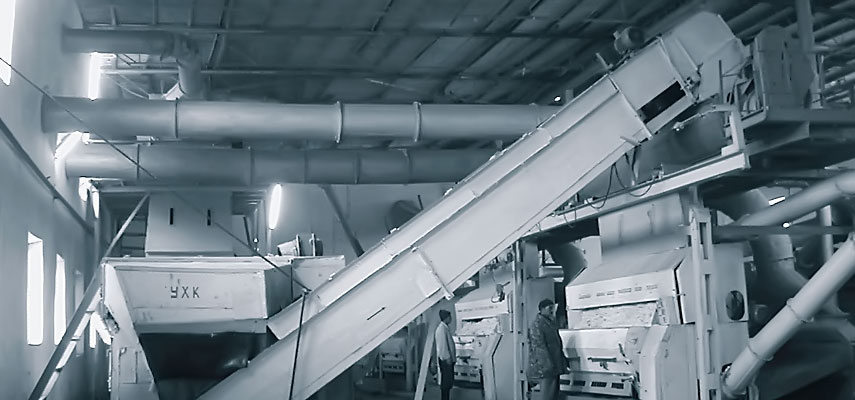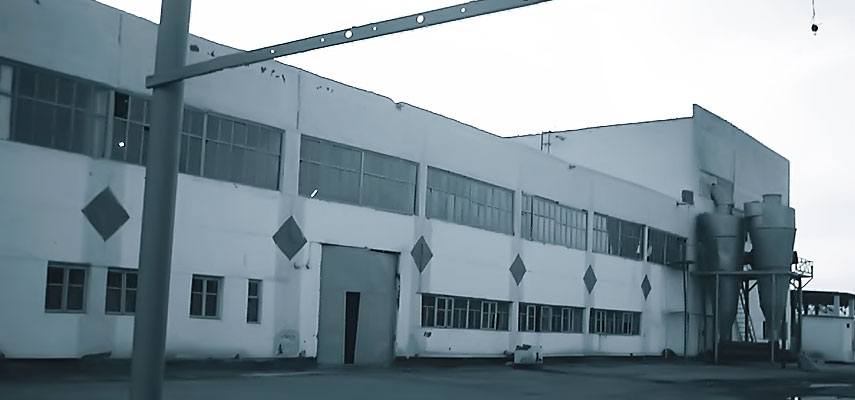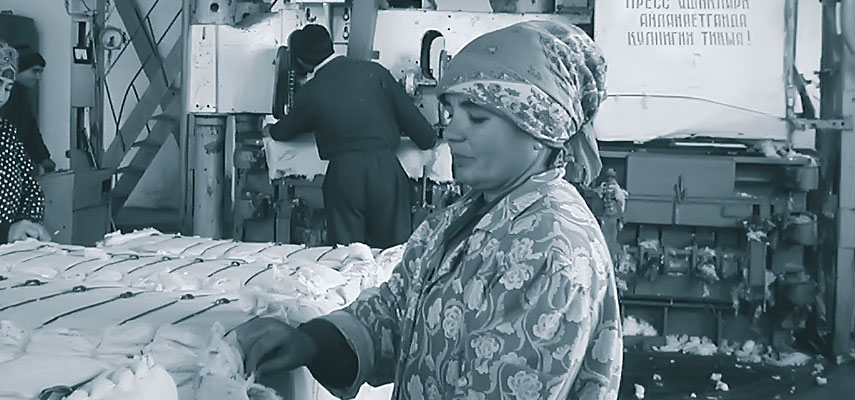History
A GLANCE ON THE PAST
Our country - Uzbekistan is considered to be a country which has its own schools and traditions in peasantry, a country of experts in this field able to grow gold on its soil. According to historical sources cotton growing was introduced in our country in 2000 B.C. and the means of processing cotton also appeared approximately at that time.
Cotton processing - cleaning, separating from its seed, receiving fibre and fur have also began at the time of cultivating cotton plantations and during several centuries approximately up to the 19th - 20lh centuries, this process has been carried out by means of the most primitive methods, i.e. with the help of such ancient instruments of production as chig'iriq, charh, devcharx, yig, savag'ich, etc.
It is not a secret that the purpose of the Tsarist Russia from making our country a colony was to annex the cotton growing areas and provide its textile plants with necessary precious raw cotton.
At the beginning of their career the Russian traders and manufactures were engaged in purchasing the cotton fibres received in a primitive way, but later with the purpose of improving this branch of industry they brought early ripening, middle type of fibres cotton seeds from Mexico and organized farms engaged in raising cotton and cotton ginning corporations.
The first cotton ginning manufacture working with steam-engines in Turkistan was built first in Tashkent in 1874 and later they appeared Andijon, Samarqand, Marg'ilon, Qo'qon, and Namangan. In these plants all the production process was carried out manually.
The big firms were engaged in buying the grown harvest of cotton, processing them in factories and selling the cotton fibre. They used to give loans to the peasants and the latter had to sell his harvest only to the commissioner who gave him loans. Commisioners used to buy the 3/4 of the whole harvest grown in Turkistan. Thus Uzbek cotton growers were dependent on the capital of Russian traders.
In 1913 424,6 thousand hectares of territory was cover with cotton plantations in three agricultural regions - Farg'ona, Sirdaryo and Samarqand there were 208 weak-powered cotton ginning corporations and more than 8000 workers were employed in them.
In 1918 in the process of nationalizing the cotton ginning factories out of 296 cotton ginning corporations only 120 of them were mechanized, and the rest were based on manual labour. After 3 years under different reason only 16 plants were left and the others stopped their activities. The equipment and instruments of these factories were out of work or plundered.
At that time there were not any corporation producing instruments or spare parts for the cotton ginning companies. Only in 1927 the only machine-building corporation producing was introduced into production process and the area of cotton growing plantations was rather widened.
At that time in all Uzbekistan 543,2 thousand hectares of area were covered with cotton plantations, and crop capacity of land was 10,52 metric centner, and because of the necessity of processing the raw cotton in 1928 in Central Asia there were 62 cotton ginning factories in which 466 ginning machines were exploited.
In 1940 the production of cotton fibre in Uzbekistan reached 500 thousand tons a year, and during the Second World War this indicator fell down considerably, i.e. in 1943 this data no more than 8 metric centner. In 1958 the power of functioning factories were equal to production of 3,5 million tons of cotton. In 1980 the amount of produced cotton fibre was 1745,3 thousand tons, the number of jinns used in the process was 729.
It best seen that the system of cotton growing and processing it in our country has a long history. But only in the years of Independence as was in all spheres of our life cotton growing and in cotton fibre producing fields began to develop considerably.



 Telephones of trust
Telephones of trust


